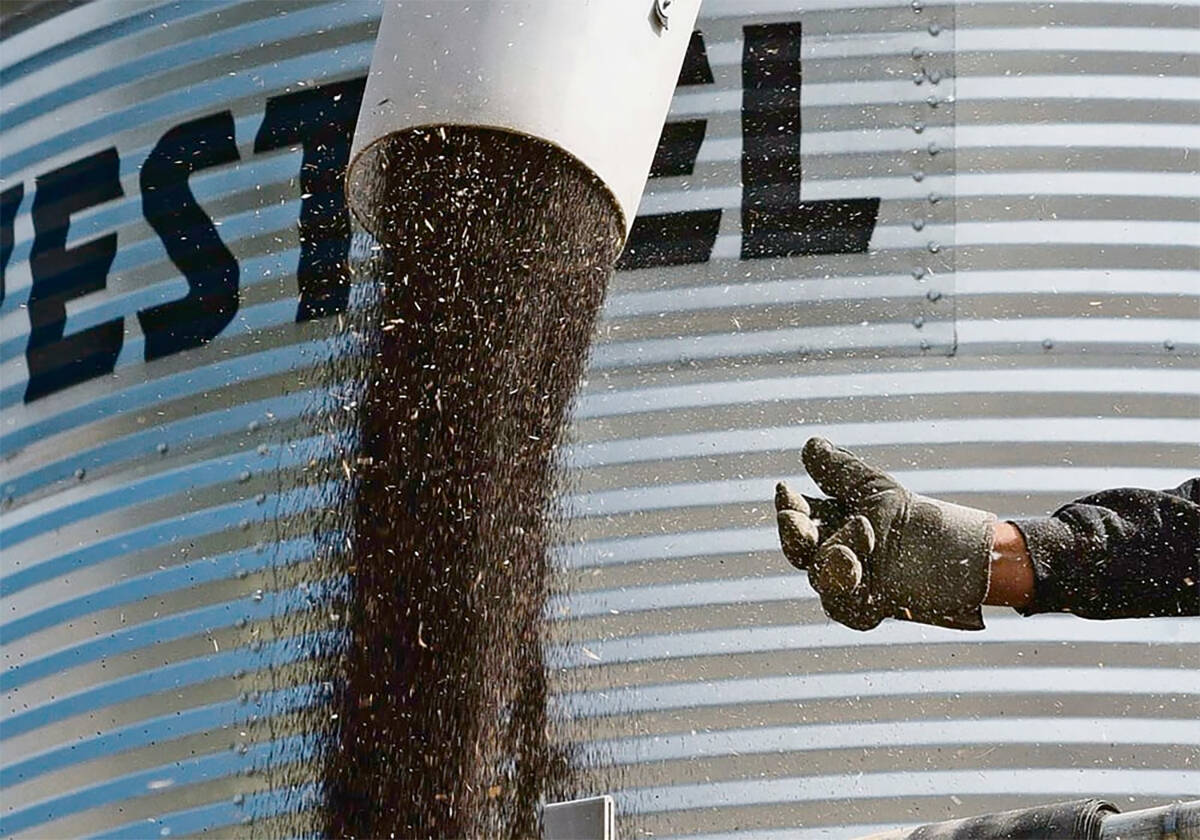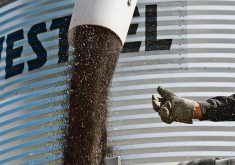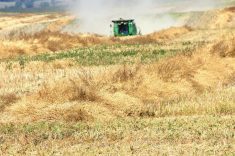A Canadian symbol of tenacity and ingenuity, or a proverbial pain in the butt?
The general view of beavers tends more toward the latter in areas of Manitoba where the animals’ dikes damage roads, railways and farmers’ crops.
The province this month said an “out-of-control” beaver population is causing millions of dollars in damage.
Conservation minister Oscar Lathlin vowed to fight the problem by extending the province’s beaver control program.
“A marked increase in problems was experienced this year because of abnormally high precipitation throughout southern Manitoba,” said Lathlin.
Read Also

Farmers urged to be grain-safe this fall
Working around grain bins comes with risk, from farmers falling to drowning in grain: Experts have five tips to help avoid grain-related accidents this harvest.
“Beaver can have a dramatic effect on the environment through the flooding of farmlands, roads and railways, the destruction of trees on private property and contamination of water.”
The winter control program pays trappers $15 per beaver harvested from designated problem areas between Oct. 1 and Dec. 31. That’s in addition to money trappers receive for the pelts.
The program will focus on two areas: municipalities that experience chronic beaver problems and registered trapline areas that are the source of beavers that migrate along watersheds to farmlands.
“We hope that the pelt price plus the subsidy will be sufficient incentive for trappers to substantially reduce the number of beaver in overpopulated areas,” Lathlin said.
But municipalities last week said the province is playing a shell game with the money spent on beaver control.
Joe Masi, executive director for the Association of Manitoba Municipalities, said the province managed to bolster its winter control program with $50,000 that it had siphoned out of its summer program for beaver control.
Under the summer program, there was a cap on how much provincial subsidy money was available per municipality for the removal of beavers.
Some municipalities surpassed their limits yet barely made a dent in the beaver populations.
“In some cases, some municipalities ran out of money in June before they even got rolling,” Masi said.
The AMM is also concerned, said Masi, because the winter control program appears targeted to certain municipalities when the association believes it should be available province wide.
One of the municipalities most prone to beaver problems said the Manitoba government should ante up more cash to make the control program more effective.
Clifford Kutzan, reeve for the Rural Municipality of Grandview, said beavers have been a problem in his area since before he was elected to council in 1998.
Here a dam, there a dam …
Last year, along a one kilometre stretch of property, he counted eight beaver dams. Some of his grain land was flooded because of the dams, making it unworkable.
Beavers also have gnawed down a large tract of trees on his property in western Manitoba.
“It’s very difficult to get anyone into trapping when fur isn’t worth anything,” he said.
Kutzan thinks more money should have been available for the summer control program. He also questions why the winter program will not go beyond Dec. 31.
“We want to know their reasoning on that.”
The winter program is open to trappers with a valid licence in the open trapping area and designated registered trapline districts.
Beaver must be taken from designated areas to qualify for the subsidy. The beaver population in Manitoba is at an all-time high because of the high costs of trapping and the low returns.
The average harvest over the past five years has been 23,000 beaver, well below what is needed to control the population.














